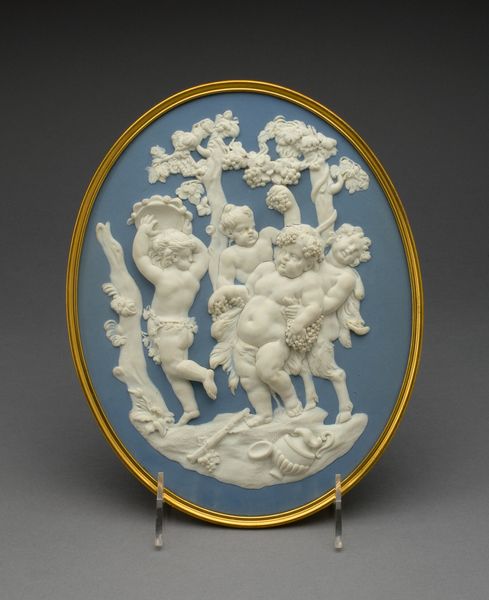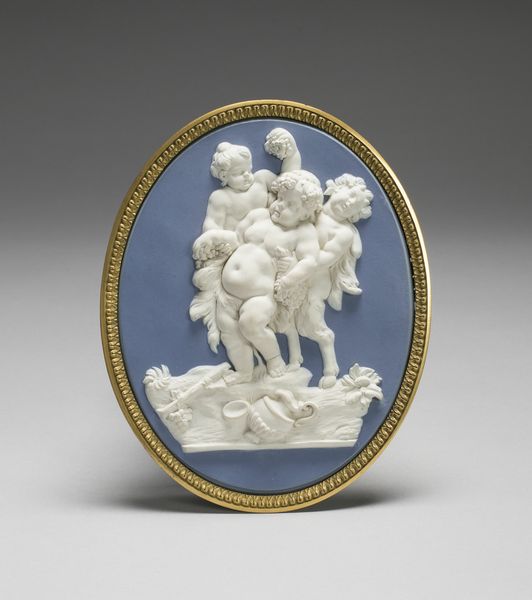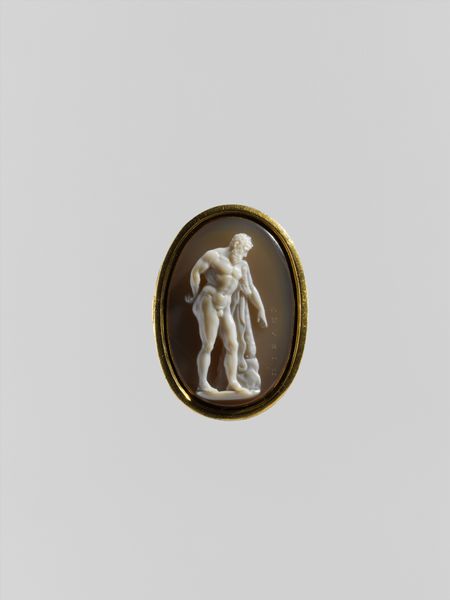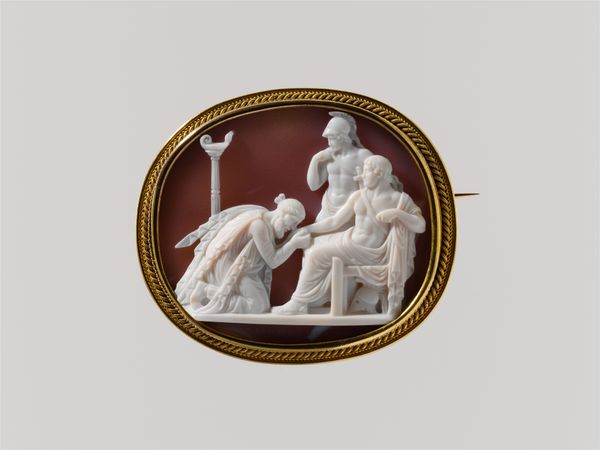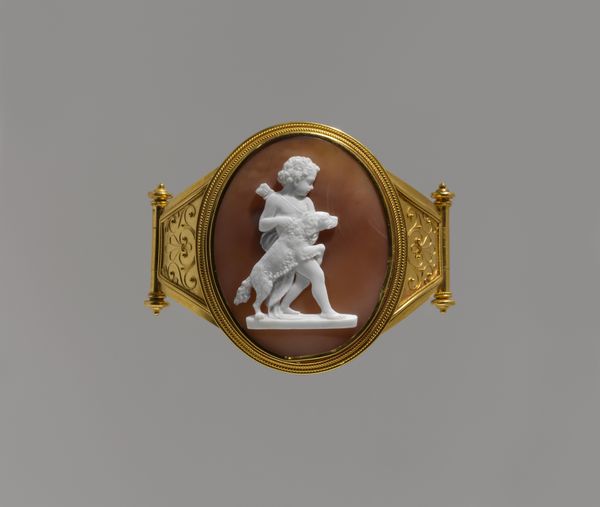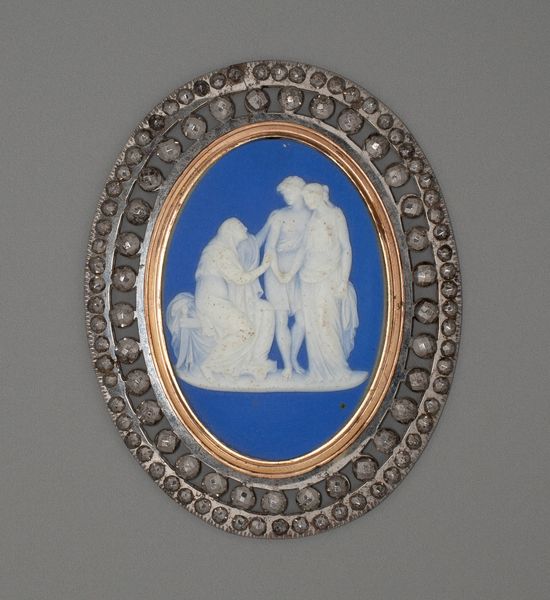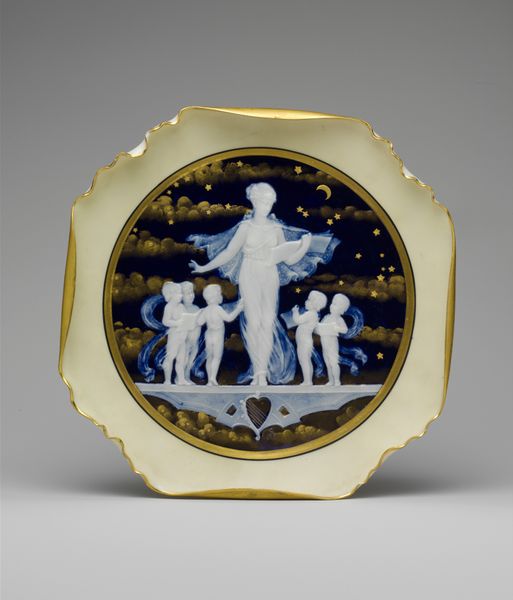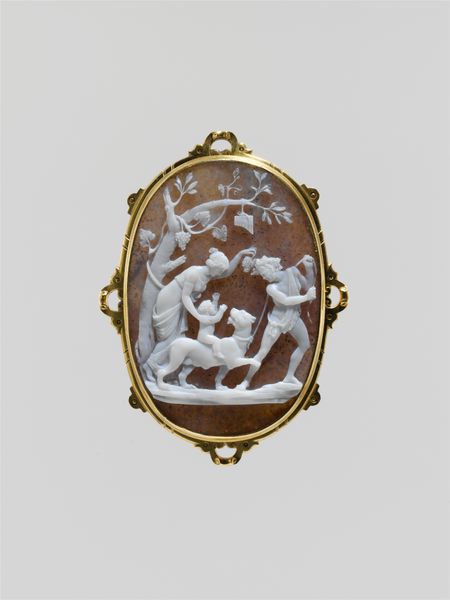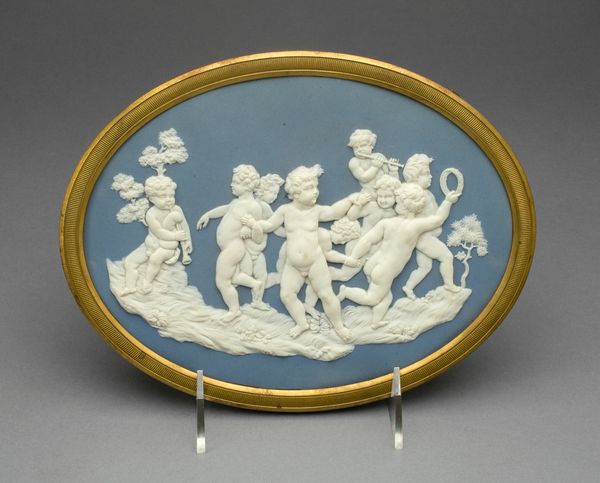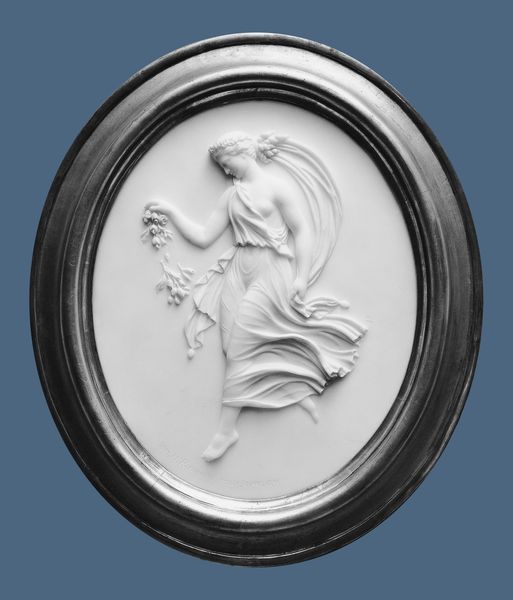
relief, ceramic, sculpture
#
neoclacissism
#
relief
#
landscape
#
ceramic
#
figuration
#
ancient-mediterranean
#
sculpture
#
ceramic
#
decorative-art
Dimensions: Unframed: 2 1/8 × 1 13/16 in. (5.4 × 4.6 cm); Framed: 2 1/2 × 2 1/8 in. (6.4 × 5.4 cm)
Copyright: Public Domain
This 'Satyr' was crafted between 1769 and 1780 by Wedgwood and Bentley. Notice how the white figures stand out against the distinctive blue background. The composition is strikingly simple: a satyr, classically rendered, is framed within a roundel. The piece leverages contrast, not just in color, but in texture. The smooth surface of the blue ground throws the intricate details of the satyr and his natural setting into sharp relief. Observe how the artist balances negative and positive space. The satyr’s contrapposto stance, with a spear casually held, suggests ease and control. This work reflects the 18th-century fascination with classical forms, but it also hints at a deeper engagement with the semiotics of power and representation. The satyr, a figure of wildness, is tamed and presented within the ordered confines of neoclassical aesthetics. The texture and color work together to communicate themes of civilization, control, and the aestheticization of nature. Its meaning is in constant flux.
Comments
No comments
Be the first to comment and join the conversation on the ultimate creative platform.

